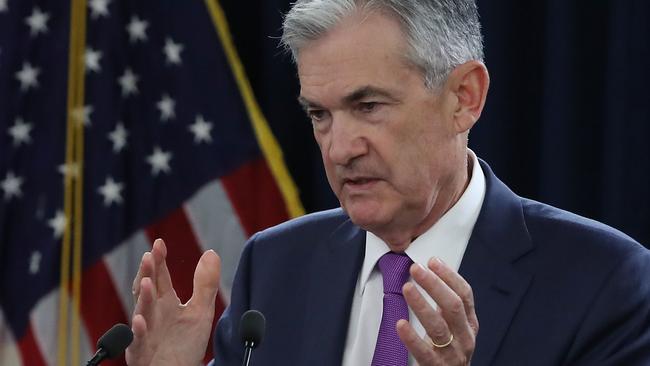Markets mull meaning of Fed’s removal of ‘accommodative’
It’s sparked debate, but Jerome Powell says removing the word “accommodative” from the Fed statement is no big deal.

For Federal Reserve chairman Jerome Powell, a key rhetorical shift in his bank’s latest policy statement isn’t a big deal.
Fed officials stripped from this morning’s statement their long-running description of monetary policy as “accommodative,” which served as a code word signalling more rate rises were coming and that policy was still providing support to the economy.
Heading into this week’s meeting -- at which officials voted for the third rate rise of 2018 -- Fed watchers debated whether that word would live or die in the statement. For some, keeping it in would help affirm what the Fed in fact reiterated: that more rate rises are coming. It would also serve as a sort of shorthand for how officials viewed the stance of monetary policy.
But others said “accommodative” needed to hit the road because under Mr Powell, the Fed is placing less weight on the uncertain science of knowing whether policy is in fact neutral or not. They also reckoned the Fed’s detailed forecasts offer a better insight into how officials think about the potency of their policy.
Speaking with reporters after the Federal Open Market Committee meeting, Mr Powell said the view among officials “was more that the language has run its useful life.”
Monetary policy remains accommodative and that’s clear from looking at where the Fed’s short-term target rate range now stands, Mr Powell said. The range now stands between 2 per cent and 2.25 per cent, compared with the Fed’s expectation that the longer-run level for the rate stands at 3 per cent.
Taking out the word now is in part tactical. “It’s a perfect time” to remove the language when policy is still clearly supporting the economy, thus eliminating the chance the Fed could send the wrong message down the road by taking it out when rates were higher and presumably closer to a neutral level, Mr Powell said.
Then there’s the matter of avoiding a sense the Fed knows more about policy than it actually does. “We don’t want to suggest...that we have this precise understanding of where accommodative stops, or suggest that that’s a really important point in our thinking,” Mr Powell said.
Instead of weighing the Fed’s target rate against some estimated concept of neutrality, “we are going to be carefully monitoring incoming data from the financial markets and the economy and asking ourselves whether our policy is achieving the goals we want to achieve.”
Mr Powell said the view of his colleagues that monetary policy will at some point become restrictive of growth is reasonable. The Fed’s current forecasts show the short-term rate target moving above the long-run estimate in 2019, 2020 and 2021, assuming the economy performs as expected.
Dow Jones Newswires



